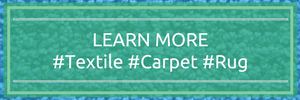Blame it on the Dyer
One of the most common problems in dyeing polyester knits in the textile industry is barre. The definition of barre is as follows: a repeating visual pattern of continuous bars or stripes, usually parallel to the courses of circular knit fabric and not intentional.
Barre can be due to the following:
- Fiber properties
- Yarn characteristics
- Knitting parameters
Barre is the differences in yarn reflectance between individual yarn in the knit structure. Any mechanism that can change the reflectance of yarn in a knit structure is a potential barre source. Barre causes physical or optical differences in the fabric which leads to dye differences in the yarns, geometric differences in the fabric structure, or a combination of the two. A barre streak can be one course or it can be several—a “shadow band”.
Causes
Yarn purchasers trying to save money for the company by purchasing yarn at a lesser quality for a cheaper price.
Knitters trying to save money and time by not changing knitting needles as often as required.
Knitters working with different knitting oils to save money and have less lubrication. This can have an impact down the line in production because the needles will not last as long.
Once the fabric is knitted and the orders placed, the dyehouse starts dyeing and in some colors they see can the stripe effect in the fabric. It is important to remember this cannot occur with all colors. A dyer cannot color uniform stripes on a fabric in production. Running fabrics in a jet machine cannot make stripes in some pieces and not in others.
Fixing Barre:
- First you must repair barre goods and reload the product in a jet machine.
- It should be releveling at a temperature of 265 F with a non-carrier carrier. This will help move the dyes on and off the fabric and help remove the barre.
- Also add 5% of a leveler or non-carrier carriers plus 5% of the dye formula to help keep the shade.
- Run that for 60 minutes and then begin cooling down.
- FSW has levelers and non-carrier carriers that will help in this area.
- The dyer then needs to check the selections of dyes in the formula and make sure they are the right selection to help avoid barre.
- FSW can help with a good dye selection to start with.
- Next it is important to pre-scour the fabric. Using a surfactant and emulsifying package will help remove impurities. This will give a good base for dyeing, and the rate of rise in the scour and pre-heat setting are critical to help prevent barre.
- FSW has surfactant packages that will help in this area.
- Lastly, the dyer should record the roll numbers of the pieces that have a barre effect. This can help trace back to what knitting machines are having an issue, the tension of the machine, the cylinders used, and yarn size. There may be a tension problem in certain knitting machines that can be corrected.
The dyer is the one that has to make quality goods out of the knitted fabric. They are challenged to select the right group of dyes and to reformulate the colors to help solve the problem from occurring. The dyer is responsible to level all the off quality for completing orders in production, knowing how much time is lost in the dyehouse, and what quality issues of reworks are occurring in the dyehouse.
In the end, the fabric will ship, the quality will improve, and the plant will keep running until all the greige goods are used up. Then, a new lot of greige goods will come into the plant for knitting, the dyer will have to repeat the above steps and the whole process starts again.
If you need any more info on what line of products FSW supplies in regard to this industry, click the picture below!



